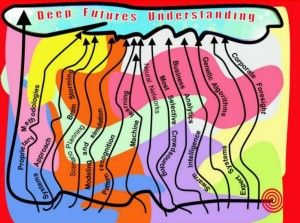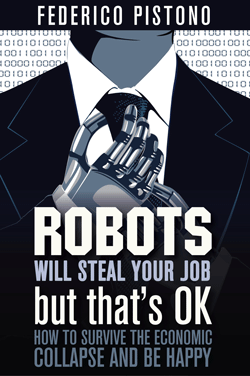Most of us know helium as that cheap inert lighter-than-air gas we use to fill party balloons and inhale to increase voice-pitch as a party trick for kids. However, helium has much more important uses to humanity — from medical (e.g. MRIs), military and defense (submarine detectors use liquid helium to clean up noisy signals), next-generation nuclear reactors, space shuttles, solar telescopes, infra-red equipment, diving, arc welding, particle physics research (the super-magnets in particle colliders rely on liquid helium), the manufacture of many digital devices, growing silicon crystals, the production of LCDs and optical fibers [1].
The principal reason helium is so important is due to its ultra-low boiling-point and inert nature making it the ultimate coolant of the human race. As the isotope helium-3, helium is also used in nuclear fusion research [2]. However, our Earth supplies of helium are being used at an unprecedented rate and could be depleted within a generation [4] and at the current rate of consumption we will run out within 25 to 30 years. As the gas is often thought of as a cheap gas it is often wasted. However, those who understand the situation, such as Prof Richardson, co-chair of a recent US National Research Council inquiry into the coming helium shortage, warn that the gas is not cheap due to the supply being inexhaustible, but because of the Helium Privatisation Act passed in 1996 by the US Congress.
Helium only accounts for 0.00052% of the Earth’s atmosphere and the majority of the helium harvested comes from beneath the ground being extracted from minerals or tapped gas deposits. This makes it one of the rarest elements of any form on the planet. However, the Act required the helium stores [4] held underground near Amarillo in Texas to be sold off at a fixed rate by 2015 regardless of the market value, to pay off the original cost of the reserve. The Amarillo storage facility holds around half the Earth’s stocks of helium: around a billion cubic meters of the gas. The US currently supplies around 80 percent of the world’s helium supplies, and once this supply is exhausted one can expect the cost of the remaining helium on Earth to increase rapidly — as this is in all practicality quite a non-renewable resource.
There is no chemical way of manufacturing helium, and the supplies we have originated in the very slow radioactive alpha decay that occurs in rocks. It has taken 4.7 billion years for the Earth to accumulate our helium reserves, which we will have exhausted within about a hundred years of the US’s National Helium Reserve having been established in 1925. When this helium is released to the atmosphere, in helium balloons for example, it is lost forever — eventually escaping into space [5][6]. So what shall we do when this crucial resource runs out? Well, in some cases liquid nitrogen (−195°C) may be adopted as a replacement — but in many cases liquid nitrogen cannot be used as a stand alone coolant as tends to be trickier to work with (triple point and melting point at around −210°C) — so the liquid helium is used because it is capable of staying liquid at the extreme cool temperatures required. No more helium means no more helium liquid (−269°C) that is used to cool the NMR (nuclear magnetic resonance apparels), and in other machines such as MRI scanners. One wonders therefore must we look towards space exploration to replenish our most rare of resources on Earth?
Continue reading “Space-Mining For Our Fastest Depleting Resource: Helium” »


 News this past week on Fukushima has not been exactly reassuring has it. Meanwhile the pro-Nuclear lobby keep counting bananas. Here I’ve gathered together some of the recent news articles on the unfolding crisis. Interested to hear some comments on this one.
News this past week on Fukushima has not been exactly reassuring has it. Meanwhile the pro-Nuclear lobby keep counting bananas. Here I’ve gathered together some of the recent news articles on the unfolding crisis. Interested to hear some comments on this one.









